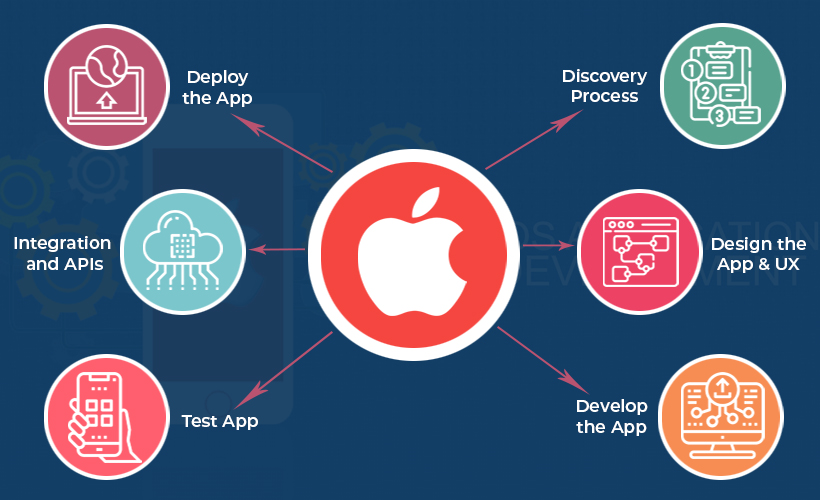Introduction
Developing an iOS app is more than just writing code; it requires strategic planning, an intuitive user experience, and seamless functionality. With Apple’s ecosystem continuously evolving, developers need to stay ahead by implementing best practices to ensure app success. Here are some crucial tips to help you create high-performing, user-friendly iOS applications.

Establish a Clear Vision for Your App
Every great app starts with a clear purpose. Before diving into development, outline the primary problem your app solves and how it will benefit users. Understanding the core functionality ensures a focused and streamlined development process, reducing unnecessary complexities.
Select the Best Tools for Development
Choosing the right technology stack is crucial for efficiency and performance. Apple offers robust tools to simplify iOS development, including:
Xcode – The official IDE for building iOS apps
Swift – A powerful and efficient programming language
UIKit & SwiftUI – Frameworks for designing user interfaces
Core Data – A framework for data management These tools help developers build scalable and maintainable applications with minimal effort.

Designing an Engaging User Interface (UI) & Experience (UX)
Focus on User Experience and Design
A visually appealing and intuitive interface enhances user engagement. Follow Apple’s Human Interface Guidelines (HIG) to ensure consistency and ease of use. Consider:
Simple Navigation: Keep menus and layouts intuitive.
Responsive Design: Ensure compatibility with various iOS devices.
Dark Mode Support: Offer a seamless experience in both light and dark modes.
Enhance App Performance and Speed
Users expect smooth, fast applications. Optimize your app’s performance by:
Reducing memory usage and preventing leaks.
Utilizing background threads for complex tasks with Grand Central Dispatch (GCD).
Implementing lazy loading for images and heavy assets to improve responsiveness.
Implement Strong Security and Privacy Measures
Apple places a strong emphasis on user privacy. To build a secure app:
Use App Transport Security (ATS) for encrypted connections.
Implement Face ID and Touch ID for authentication.
Store sensitive user data securely using Keychain Services.
Regularly update security patches to prevent vulnerabilities.
Thoroughly Test Your App Before Launch
A buggy app can lead to poor reviews and uninstallations. Ensure thorough testing with:
Unit Testing: Check individual components for reliability.
UI Testing: Validate user interface consistency.
Performance Testing: Identify lags and optimize speed.
Beta Testing with TestFlight: Gather feedback before public release.
Optimize for App Store Success
Getting your app noticed on the App Store requires strategic optimization. Improve discoverability by:
Using relevant keywords in the title and description.
Creating an engaging app icon and preview screenshots.
Encouraging positive reviews and ratings.
Updating the app regularly to maintain a strong ranking.
Utilize Analytics for Continuous Improvement
Understanding user behavior helps refine your app. Use tools like:
Firebase Analytics for tracking user interactions.
Crashlytics to identify and fix app crashes.
Heatmaps and session recordings to analyze navigation patterns.
Ensure Seamless Compatibility Across Apple Devices
Your app should work seamlessly on iPhones, iPads, Apple Watch, and even Apple TV. Utilize adaptive layouts and scalable assets to maintain a consistent experience across different screen sizes.
Commit to Ongoing Updates and Maintenance
Launching your app is just the beginning. Continuous updates keep your app relevant and improve user retention. Address bug fixes, introduce new features, and adapt to the latest iOS updates to enhance overall performance.
Final thoughts
Successful iOS app development requires a blend of technical expertise, creativity, and user-centric design. By following these essential strategies, you can build an app that not only functions seamlessly but also provides value to users and stands out in the competitive App Store landscape. Whether you’re a beginner or an experienced developer, staying updated with Apple’s latest technologies and best practices will ensure long-term success in the iOS ecosystem.





